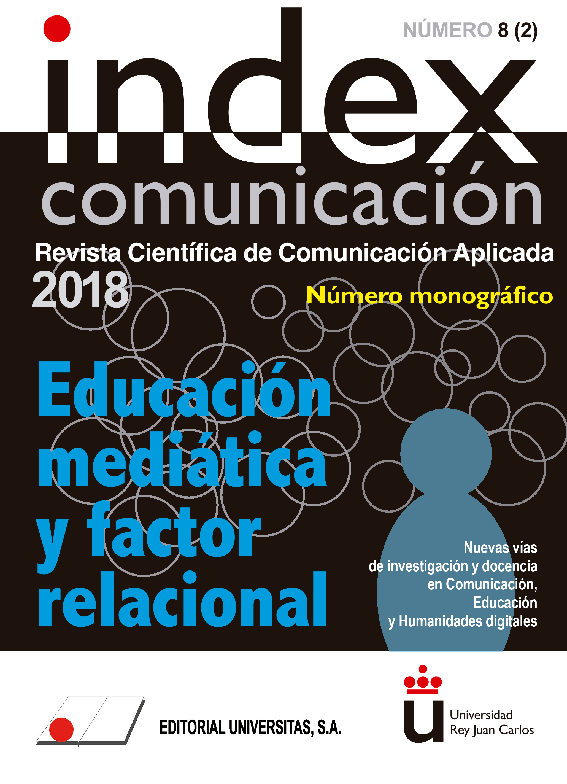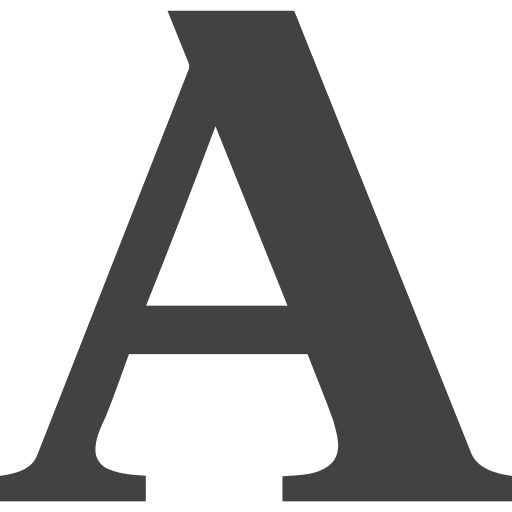Flipped Learning and Digital Competence: Techno-Pedagogical Design and University Students Perception
Keywords:
Instructional Design, Educational Technology, Digital Competence, Learner Engagement, Flipped Learning, TPCK,Abstract
This article documents the application of a techno-pedagogical design based on the TPCK (Technological Pedagogical Content Knowledge) model of technology integration in teaching and in flipped learning, in a subject of the Degree in Advertising and Public Relations of the University do Vigo and analyzes the level of engagement and satisfaction of students with the implementation. To measure students' perceptions, a voluntary questionnaire administered before the end of the semester was used for the accidental sample composed of those enrolled in the subject (60 responses); the data obtained were analyzed and then confronted with the assessments received in the Survey of Teaching Evaluation, administered by the university to the same sample by an external company. The data provided by this institutional survey also allow a longitudinal comparison with the results obtained in previous courses in which different teaching methodology was used. The results show the high level of engagement, satisfaction and assessment by the students of the teaching approach used and it is concluded that the teaching methodology based on flipped learning and the cross-cutting integration of technology is considered by the participants as very satisfactory and useful in their learning process.
Metrics
References
Ainley, M. (2012). ‘Students’ Interest and Engagement in Classroom Activities. En S. L. Christenson; A. L. Reschly y C. Wylie (Eds.). Handbook of Research on Student Engagement (pp. 283-302). Boston, MA: Springer US. Doi: https://doi.org/10.1007/978-1-4614-2018-7_13
Anderson, L. W.; Krathwohl, D. R. y Bloom, B. S. (2001). A taxonomy for learning, teaching, and assessing: a revision of Bloom’s taxonomy of educational objectives. New York: Longman.
Appleton, J. J.; Christenson, S. L. y Furlong, M. J. (2008). Student engagement with school: Critical conceptual and methodological issues of the construct. Psychology in the Schools, 45(5), 369-386. Doi: https://doi.org/10.1002/pits.20303
Chai, C. S.; Koh, J. H. L. y Tsai, C.-C. (2013). A review of technological pedagogical content knowledge. Educational Technology and Society, 16(2), 31-51.
Cotta, K. I.; Shah, S.; Almgren, M. M.; Macías-Moriarity, L. Z. y Mody, V. (2016). Effectiveness of flipped classroom instructional model in teaching pharmaceutical calculations. Currents in Pharmacy Teaching and Learning, 8(5), 646-653. Doi: https://doi.org/10.1016/j.cptl.2016.06.011
Fidalgo-Blanco, A.; Martínez-Núñez, M.; Borrás-Gene, O. y Sánchez-Medina, J. J. (2016). Micro flip teaching ‒ An innovative model to promote the active involvement of students. Computers in Human Behavior, 72, 713-723. Doi: https://doi.org/10.1016/j.chb.2016.07.060
Finn, J. D. y Zimmer, K. S. (2012). Student Engagement: What Is It? Why Does It Matter? En S. L. Christenson; A. L. Reschly y C. Wylie (Eds.). Handbook of Research on Student Engagement (pp. 97-131). Boston, MA: Springer US. Doi: https://doi.org/10.1007/978-1-4614-2018-7_13
Flipped Learning Network. (s. f.): Definition of Flipped Learning. Recuperado desde: http://flippedlearning.org/definition-of-flipped-learning/
Foertsch, J.; Moses, G.; Strikwerda, J. y Litzkow, M. (2002). Reversing the Lecture/Homework Paradigm Using eTEACH® Web-based Streaming Video Software. Journal of Engineering Education, 91(3), 267-274. Doi: https://doi.org/10.1002/j.2168-9830.2002.tb00703.x
Fredricks, J. A.; Blumenfeld, P. C. y Paris, A. H. (2004). School Engagement: Potential of the Concept, State of the Evidence. Review of Educational Research, 74(1), 59-109. Doi: https://doi.org/10.3102/00346543074001059
Fredricks, J. A.; Wang, M.-T.; Schall Linn, J.; Hofkens, T. L.; Sung, H.; Parr, A. y Allerton, J. (2016). Using qualitative methods to develop a survey measure of math and science engagement. Learning and Instruction, 43, 5-15. Doi: https://doi.org/10.1016/j.learninstruc.2016.01.009
Graham, C. R. (2011). Theoretical considerations for understanding technological pedagogical content knowledge (TPACK). Computers and Education, 57(3), 1953-1960. Doi: https://doi.org/10.1016/j.compedu.2011.04.010
Hamdan, N.; McKnight, P. y Arfstrom, K. M. (2013). The Flipped Learning Model: A White Paper Based on the Literature Review. Flipped Learning Network. Recuperado de: http://flippedlearning.org/wp-content/uploads/2016/07/WhitePaper_FlippedLearning.pdf
Hernández-Sampieri, R.; Fernández-Collado, C. y Baptista-Lucio, M. (2010).Metodología de la investigación. México: McGraw Hill.
Jeong, J. S.; González-Gómez, D. y Cañada-Cañada, F. (2016). ‘Students’ Perceptions and Emotions Toward Learning in a Flipped General Science Classroom. Journal of Science Education and Technology, 25(5), 747-758. Doi: https://doi.org/10.1007/s10956-016-9630-8
Kim, M. K.; Kim, S. M.; Khera, O. y Getman, J. (2014). The experience of three flipped classrooms in an urban university: an exploration of design principles. The Internet and Higher Education, 22, 37-50. Doi: https://doi.org/10.1016/j.iheduc.2014.04.003
Mason, G. S.; Shuman, T. R. y Cook, K. E. (2013). Comparing the Effectiveness of an Inverted Classroom to a Traditional Classroom in an Upper-Division Engineering Course. IEEE Transactions on Education, 56(4), 430-435. Doi: https://doi.org/10.1109/TE.2013.2249066
McLaughlin, J. E.; Roth, M. T.; Glatt, D. M.; Gharkholonarehe, N.; Davidson, C. A.; Griffin, L. M. y Mumper, R. J. (2014). The Flipped Classroom: A Course Redesign to Foster Learning and Engagement in a Health Professions School. Academic Medicine, 89(2), 236-243. Doi: https://doi.org/10.1097/ACM.0000000000000086
McLaughlin, J. E.; White, P. J.; Khanova, J. y Yuriev, E. (2016). Flipped Classroom Implementation: A Case Report of Two Higher Education Institutions in the United States and Australia. Computers in the Schools, 33(1), 24-37. Doi: https://doi.org/10.1080/07380569.2016.1137734
Mishra, P. y Koehler, M. J. (2006). Technological pedagogical content knowledge: A framework for teacher knowledge. Teachers College Record, 108(6), 1017-1054. Doi: https://doi.org/10.1111/j.1467-9620.2006.00684.x
Mosher, R. y McGowan, B. (1985). Assessing student engagement in secondary schools: Alternative conceptions, strategies of assessing, and instruments. Wisconsin: University of Wisconsin, Research and Development Center.
Prieto, A.; Díaz, D.; Lara, I.; Montserrat, J.; Oliva, R. y Barbarroja, J. (2017). Aspectos críticos para aplicar con éxito el modelo flipped classroom a la enseñanza de la inmunología: resultados de 5 años de experiencias en la Universidad de Alcalá. Teaching & Learning Innovation Journal = Revista de Innovación en la Enseñanza y el Aprendizaje, 1(0), 19-23. Doi: https://doi.org/10.18002/tele(in)2j.v1i0.5148
Prieto, A.; Díaz, D.; Lara, I.; Monserrat, J.; Sanvicen, P.; Santiago, R. y Álvarez-Mon, M. (2018). Nuevas combinaciones de aula inversa con just in time teaching y análisis de respuestas de los alumnos. RIED. Revista Iberoamericana de Educación a Distancia, 21(1), 175-194. Doi: https://doi.org/10.5944/ried.21.1.18836
Renninger, K. A. y Bachrach, J. E. (2015). Studying Triggers for Interest and Engagement Using Observational Methods. Educational Psychologist, 50(1), 58-69. Doi: https://doi.org/10.1080/00461520.2014.999920
Reschly, A. L. y Christenson, S. L. (2012). Jingle, Jangle and Conceptual Haziness: Evolution and Future Directions onf the Engagement Construct. En S. L. Christenson; A. L. Reschly y C. Wylie (Eds.). Handbook of Research on Student Engagement (pp. 3-19). Boston, MA: Springer US. Doi: https://doi.org/10.1007/978-1-4614-2018-7_13
Roach, T. (2014). Student perceptions toward flipped learning: New methods to increase interaction and active learning in economics. International Review of Economics Education, 17, 74-84. Doi: https://doi.org/10.1016/j.iree.2014.08.003
Simpson, V. y Richards, E. (2015). Flipping the classroom to teach population health: Increasing the relevance. Nurse Education in Practice, 15(3), 162-167. Doi: https://doi.org/10.1016/j.nepr.2014.12.001
Wilson, S. G. (2013). The Flipped Class A Method to Address the Challenges of an Undergraduate Statistics Course. Teaching of Psychology, 40(3), 193-199. Doi: https://doi.org/10.1177/0098628313487461
Published
How to Cite
Issue
Section
License
Authors who submit to this journal agree to the following terms:
Authors retain copyright and ensure the magazine's right to be the first publication of the work as licensed under a Creative Commons Attribution-NoComercial 4.0 International License that allows others to share the work with an acknowledgment of authorship of the work and the initial publication in this magazine, with no commercial purpose.
Authors can establish separate additional agreements for non-exclusive distribution of the version of the work published in the magazine (for example, to an institutional repository or publish it in a book), with an acknowledgment of its initial publication in this journal.
It allows and authors are encouraged to disseminate their work electronically (eg, in institutional repositories or on their own website) prior to and during the submission process, as it can lead to productive exchanges, as well as a citation more early and most of the published work (See The Effect of Open Access).















